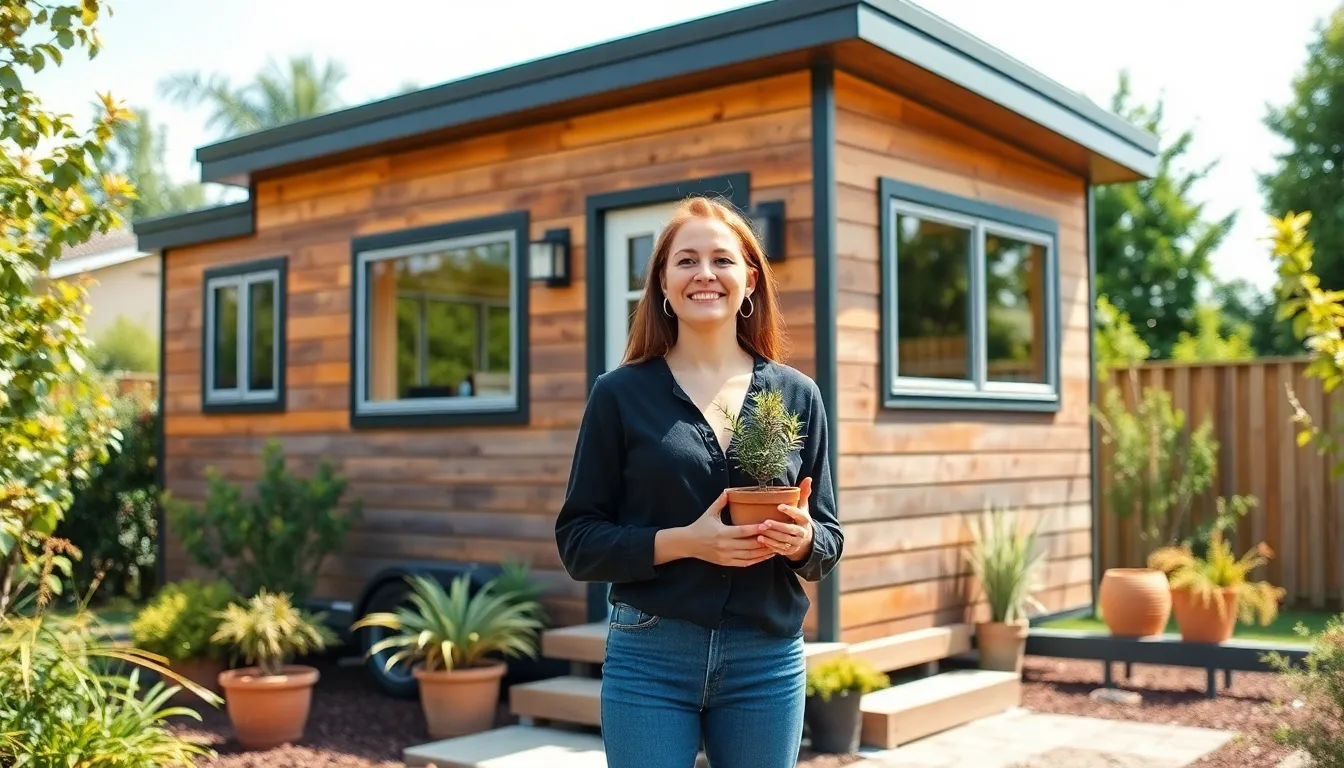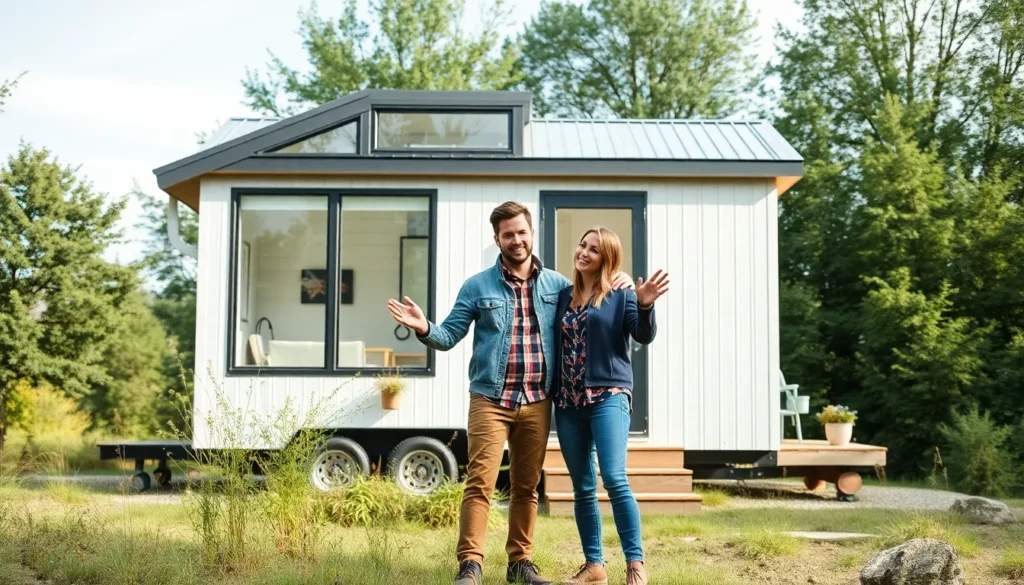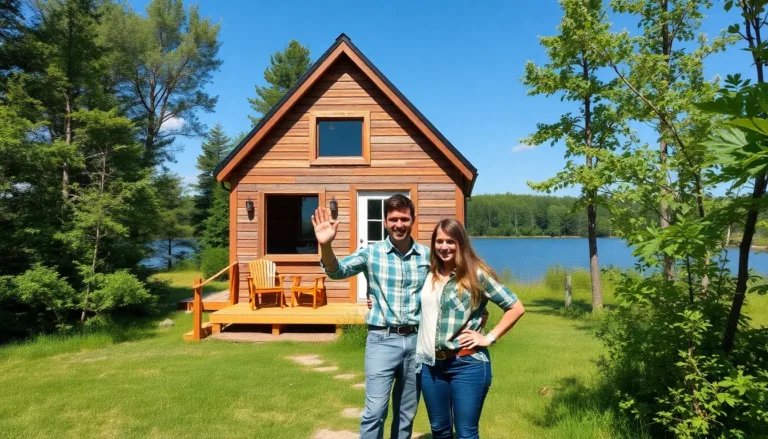Table of Contents
ToggleIn a world where bigger often seems better, tiny houses are flipping the script. These pint-sized abodes pack a punch, proving that less really can be more. With the rising costs of traditional real estate, tiny houses offer an affordable and eco-friendly alternative, making homeownership a reality for many who thought it was out of reach.
Overview of Tiny House Real Estate
Tiny house real estate represents a transformative trend in the housing market. The appeal stems from affordability, with the average cost of a tiny home ranging from $20,000 to $60,000. Compact living spaces minimize expenses, enabling more individuals to achieve homeownership amidst rising housing prices. These residences also emphasize sustainability, often utilizing eco-friendly materials and energy-efficient systems.
Investors increasingly recognize tiny homes as viable options for rental properties. Short-term rentals generate significant income, particularly in tourist hotspots where compact accommodations attract visitors. Numerous communities now incorporate tiny house villages, allowing for a shared environment focused on sustainable living. Regulatory challenges exist, but many local governments adjust zoning laws to accommodate this growing movement.
Tiny houses are versatile, serving diverse purposes from permanent residences to vacation spots. Customization appeals to many individuals, enabling them to personalize their living spaces based on unique needs and preferences. The reduced environmental footprint attracts eco-conscious buyers, highlighting the growing importance of sustainable living.
Ownership structures vary, with options ranging from purchasing land outright to renting space in a tiny house community. Potential owners should explore finance options designed specifically for tiny homes to facilitate their investment. Market demand for this segment continues to rise, suggesting substantial opportunities for homeowners and investors alike.
Benefits of Tiny House Living

Tiny house living offers numerous advantages that attract homeowners and investors alike. This lifestyle emphasizes simplicity and sustainability while providing significant benefits.
Financial Savings
Reduced costs stand out as a primary advantage of tiny homes. With an average price ranging from $20,000 to $60,000, these properties make homeownership accessible. Lower mortgage payments and utility bills contribute to ongoing savings. Many tiny houses come equipped with energy-efficient systems, further minimizing monthly expenses. Property taxes also tend to decrease as the assessed value is lower than traditional homes. Additionally, tiny homes often require less maintenance, leading to further financial benefits over time.
Minimalist Lifestyle
Adopting a minimalist lifestyle becomes easier with the limited space of tiny houses. Homeowners prioritize only essential items, promoting a less cluttered living environment. This approach encourages individuals to focus on experiences instead of material possessions. Space limitations foster creativity in organization and design, resulting in innovative and efficient use of living areas. Less space leads to reduced maintenance and cleaning time, allowing for more leisure activities. A commitment to minimalism often aligns with sustainable living practices, reinforcing the appeal of tiny house communities.
Challenges of Tiny House Real Estate
Tiny house real estate presents unique challenges that potential owners and investors must navigate. Understanding these obstacles can enhance decision-making.
Zoning and Legal Issues
Zoning regulations often restrict where tiny homes can be placed. Some municipalities don’t allow tiny homes on standard residential lots, complicating placement options. Legal definitions of a dwelling can also limit tiny houses classified under traditional housing standards. Owners may encounter difficulty obtaining permits for construction or use. Compliance with local building codes can necessitate significant modifications, decreasing the appeal of a tiny home.
Limited Space Considerations
Living in a tiny house requires adapting to limited square footage. Space constraints demand innovative storage solutions and multifunctional furniture. Homeowners face challenges in organizing belongings efficiently, impacting daily routines. Guests may feel cramped during visits, complicating social interactions. The psychological impact of downsizing can also pose difficulties, as many struggle with the transition from larger living spaces. Embracing a minimalist lifestyle is necessary for optimal use of the available space.
Popular Tiny House Designs
Tiny house designs blend functionality with style, showcasing innovative solutions for compact living.
Modern Aesthetics
Sleek lines often characterize modern tiny house designs, creating visually appealing and efficient spaces. Minimalist features integrate seamlessly with vibrant color choices, attracting those who appreciate contemporary style. Large windows optimize natural light, making interiors feel spacious and inviting. Many designs incorporate open floor plans, emphasizing a seamless flow from room to room. Unique architectural details, such as cantilevered sections, offer a striking visual impact while enhancing living space.
Eco-Friendly Options
Sustainability remains at the forefront of tiny house designs. Many choose renewable materials like bamboo or reclaimed wood, minimizing environmental impact. Energy-efficient appliances and solar panels significantly reduce utility costs, making them a smart investment. Insulation standards often exceed those of traditional homes, keeping climate control efficient and energy use low. Green roofs or rainwater collection systems further enhance the ecological benefits, supporting a lifestyle rooted in environmental consciousness.
The Future of Tiny House Real Estate
Tiny house real estate is set to expand, driven by increasing demand for affordable housing options. Many buyers prefer smaller, low-maintenance homes that align with sustainable living trends. The combination of eco-friendliness and cost-effectiveness makes tiny houses a compelling choice.
Innovative builders are responding to this demand by creating unique designs that maximize space and functionality. Strategies include incorporating multifunctional furniture and utilizing smart storage solutions to enhance livability. Styles are evolving too, with contemporary aesthetics featuring open floor plans and large windows to amplify natural light.
Investors are noticing the profitability of tiny homes as vacation rentals in high-demand tourist destinations. Data indicates that locations with tiny house communities see a boost in tourism, as visitors seek unique and affordable lodging options. Local governments increasingly adapt zoning laws to accommodate these developments, recognizing their potential to address housing shortages.
Challenges persist, particularly regarding zoning regulations and building codes. Navigating these legal obstacles requires persistent effort from owners and investors alike. Proprietors often need to advocate for changes, ensuring that tiny houses become integrated into local housing strategies.
The tiny house movement also fosters a lifestyle shift towards minimalism. Homeowners focus on experiences over possessions, which creates a greater appreciation for personal space. Psychological advantages emerge as individuals adjust to streamlined living, encouraging creativity in design and organization.
Professionals in real estate anticipate further advancements in tiny house technologies and materials. Sustainable options will remain at the forefront, utilizing renewable resources and energy-efficient systems for home construction. Future growth in tiny house real estate signifies a movement towards a more affordable, eco-friendly, and innovative housing landscape.
Tiny house real estate is reshaping the housing landscape by offering affordable and sustainable living options. As more individuals seek to escape rising costs and embrace minimalism, tiny homes provide a practical solution that promotes financial freedom and environmental responsibility.
The movement continues to gain traction with innovative designs and supportive zoning changes, making it an attractive investment opportunity. While challenges remain, the benefits of tiny living, such as reduced expenses and creative space utilization, are driving interest.
As the tiny house trend evolves, it’s clear that this lifestyle is more than just a housing solution; it’s a shift towards valuing experiences over possessions. The future looks bright for those willing to embrace this transformative way of living.







